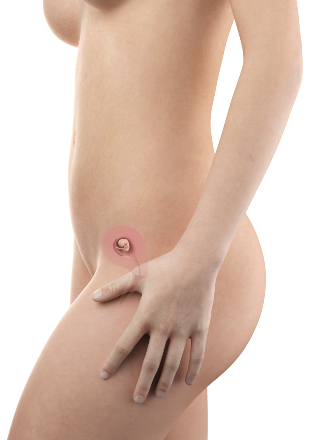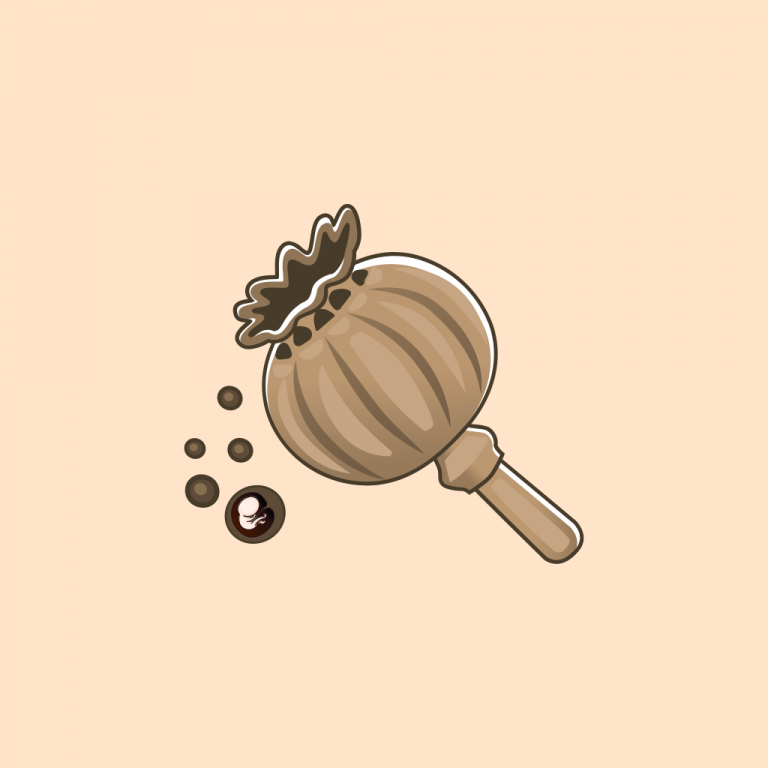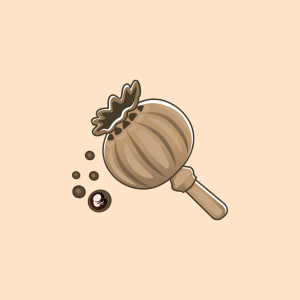Your tiny human now has a beating heart and is about the size of a sesame seed.
Other structures are beginning to form like your baby’s brain and spinal cord. The placenta, an organ designed to provide all the nutrients that your baby will need while in utero, is continuing to form. How amazing is all that! Maybe you and your partner have decided to tell close family or a couple of friends how excited that you are to be expecting a baby.

Your tiny human now has a beating heart and is about the size of a sesame seed.
How my Baby Grows
- Your tiny baby now has a beating heart, you can’t see it just yet even with ultrasound, but you will soon be able to do so
- The neural tube fuses around this time to enclose the baby’s spinal column and brain
- The embryo has a tail which will disappear in a couple of weeks and the entire embryo is about 4.0 millimeters
Symptoms Mama may Feel or Experience
- The symptoms we talked about in week four continue and may be getting stronger every week due to hormonal influence.
- Don’t worry though if you do not have symptoms as some women don’t.
- Now that you are actually on this journey you may be imagining what your baby will look like, what his/her interests might be or what it will feel like to add a new member to your family, this type of bonding or connecting with your baby happens at different times for everyone
Thoughts to Consider
- Let’s talk about prenatal care
- Traditional prenatal care is when an expecting mom goes to a medical office to see their provider every four weeks until they are 28 weeks, every 2 weeks until they are 36 weeks and then every week after that until your baby comes, the average time with a provider is about 10 minutes, you will have blood drawn if needed, information shared with you and a time to ask questions
- Group prenatal care is offered in some locations, it is a time when you have the traditional vital signs and fetal heart rate evaluated and then spend 1.5 to 2 hours in a group setting with other women and their partners who are due the same month as you are, the first part of the visit is individual, and then the group time is filled with discussion, games and other fun learning opportunities to discuss all things pregnancy and birth related, most of the groups have a reunion where all the couples meet about a month after the babies are born to tell their birth stories and see the babies, often these groups continue to meet on their own as their children grow up together
- Deciding on a physician or midwife practice is another consideration. In the US the majority of births are attended by physicians however that is not true for the rest of the world and the midwifery model of safe, low intervention care is gaining in popularity everywhere. There are some midwives who deliver in homes for very low risk women but most of the midwives in the US now attend births in hospitals or birthing centers. Many practices have both physicians and certified nurse midwives as well as nurse practitioners (NPs). NPs see your during the pregnancy but not attend the birth.is another consideration, in the US the majority of births are attended by physicians however that is not true for the rest of the world and the midwifery model of safe, low intervention care is gaining in popularity everywhere, there are some midwives who deliver in homes for very low risk women but most of the midwives in the US now attend births in hospitals or birthing centers, many practices have both physicians and certified nurse midwives as well as nurse practitioners (NPs), NPs see you during the pregnancy but do not attend the birth
- Let’s talk about choosing a place to give birth
- This is very important to know before you choose a provider because not all providers will attend births at various facilities. Most babies in the US are born in hospitals, over the past 30 years hospital maternity or birth floors have changed a great deal and are far more home like and comfortable to labor in and give birth, some hospitals are more supportive of unmedicated births, labor support and breastfeeding than others, in StorkAdvisor we have a place for you to rate the hospitals or birth centers in your area
- Birth centers are not available everywhere but are a wonderful alternative for a low-risk pregnancy, they are very homelike, have space for you to walk in labor and many have kitchens for families to use, they are often large rooms with comfortable sitting areas and hot tubs for labor and/or birth, they are very family friendly and are usually run by midwives who have an affiliation with hospitals in case of the unexpected
- The family home is another place that women all over the world give birth, this option is limited by state laws where you live, if your location has home birth midwives, they will assess for the presence of certain risk factors in your pregnancy and tell you if you would be a good candidate
Tips for a Healthy Pregnancy
- Make sure to keep your regularly scheduled dental appointments during pregnancy.
- Hormonal changes during pregnancy can make your gums more vulnerable to plaque, causing inflammation or bleeding
- Gentle brushing often during the day and using floss can help prevent this
- Of course, we have to mention water intake, if you are pregnant during the summer months this is especially true.
- Moving will help you feel better and make you stronger for birth, daily walks, swimming or yoga are wonderful ways to get this movement in and keep you feeling great
- Check out our articles and videos in Go-to-Topics under the self-care category, we have information on ways to take care of yourself while you grow your baby and yoga videos for you to work out with during every trimester of the pregnancy









